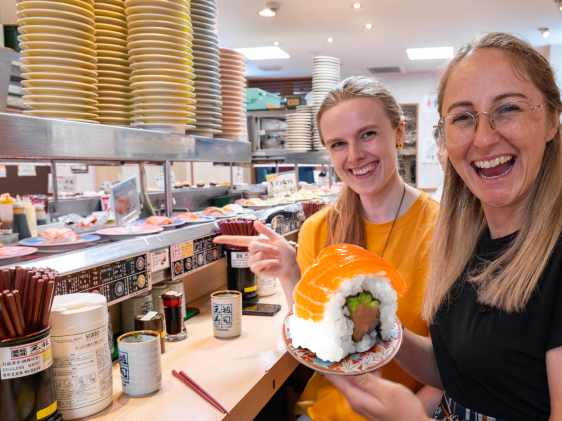School holidays in Japan mean that it’s time to whip out a Seishun 18 ticket and do some budget traveling. This discount rail pass allows you to go anywhere that the JR network goes, on local and rapid trains. The tickets, which come in a 3- or 5-day pack, are available three times a year. Despite the name, anyone can use the pass — no matter whether you’re a young’un or a golden oldie, local or just here for a visit.
Below, you’ll find some ideas for five short trips from Tokyo using the pass. They’re best done in summer, but aren’t out of bounds in the cooler seasons (camping and water activities may be limited, though). For more details on the Seishun 18 ticket (or Seishun 18 kippu, as it’s known in Japanese), as well as other route ideas, see our main article on the Seishun 18 rail pass.
If you’re looking for the 7-day Japan Rail Pass instead, this is the post to read.
Short trips from Tokyo using the Seishun 18
99 Li Beach, Chiba Prefecture
Travel time: 2-3 hours
This wide, long, relatively empty beach with lots of soft clean sand is night and day from the crowded, trash-filled scene of Shonan. A li, at the time of naming, measured about 660 meters, and at 99 li long, Kujukuri (as it’s known in Japanese) measures about 66km. The beach stretches all the way from Cape Gyobumi in the north to Cape Taito in the south.
There is something for everyone at 99 Li, with lots of camping areas, beach hotels, and cafés dotted along the coast. For example, the Ichinomiya Beach area, 10 minutes by bus from Kazusa-Ichinomiya Station, is popular among surfers. We recommend starting your explorations there.

Lake Inawashiro, Fukushima Prefecture
Travel time: 5.5 hours
At the foot of Mount Bandai, in the Aizu region of Fukushima, is Lake Inawashiro — Japan’s fourth largest lake. This clean, picturesque body of water is great for swimming, water and winter sports, bird watching, and camping. Nicknamed Heaven’s Mirror, the lake surface reflects Mount Bandai on clear days, making for awesome photo ops. The small resort town of Inawashiro is in a rural area, and many of the businesses are dedicated to tourism, including small family-run “pensions” (small, affordable hotels) and minshuku bed and breakfasts.
A local bus from Inawashiro Station to the lake takes 10 minutes, and leaves around six times a day. You can also get there by taxi for roughly ¥1,000. A good camping option is this campsite at Tenjin Beach.

Minakami, Gunma Prefecture
Travel time: About 3 hours
The town of Minakami in northern Gunma Prefecture is a water sports mecca, with rafting (rapids level 2-4), kayaking, and river walking in the Tone River, and canoeing in Lakes Okutone and Naramata. The river is only a few minutes’ walk from Minakami Station, and there are several guide companies that lead rafting and other water sports expeditions if you are looking for a structured experience. In winter, Minakami is hot spring country. It’s also the top place to bungy jump in Japan, year-round.

Miho Beach, Shizuoka Prefecture
Travel time: About 3 hours by train, plus 30 min by bus
Miho no Matsubara is a rocky beach lined with black pines on Suruga Bay, with stunning views of Mount Fuji. In addition to swimming and sunbathing, this spot is popular for sailing, diving, and fishing. The 7-kilometer spit features a pleasant walking and cycling path. While you’re there, consider visiting one of the nearby museums, like the Museum of Natural History (dinosaur bones!) and the Marine Science Museum.
To get there, take the train to Shimizu Station, then a bus to Miho Beach.
Note: To work out routes, exact travel times, and transfers for this and the above trips, play around on Jorudan (available in English).

For more trip ideas using the Seishun 18 ticket, check out our sister post on the pass.
While we do our best to ensure it’s correct, information is subject to change. Post first published in August 2012. Last updated: November 2024 by Maria Danuco.
































